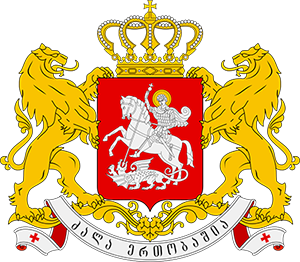ციფრული მმართველობის სამართლებრივ-ტექნოლოგიური ასპექტები
ავტორი: გიორგი ხატიძე, ზვიად გაბისონია, ნინო ჯოლია
რეფერატი
ნაშრომში განხილულია ციფრული მმართველობის დანერგვის და განვითარების სამართლებრივი საშუალებები და ტექნოლოგიური მექანიზმები ესტონეთის გამოცდილების მაგალითზე, ასევე ციფრული მმართველობის არსი, საერთაშორისო ინსტრუმენტები და საერთაშორისო ორგანიზაციების როლი და საქმიანობა ციფრული მმართველობის მიმართულებით. რეალური და სრულყოფილი ციფრული მმართველობისთვის საჭიროა არსებობდეს ელექტრონული მმართველობის სისტემების თავსებადობა და ინტერაქტიულობა. მონაცემთა გაცვლისას ყურადღება უნდა გამახვილდეს პერსონალური მონაცემების და კიბერუსაფრთხოების საკითხებზე. ციფრული მმართველობის სამართლებრივი მოწესრიგების მიზნით, ესტონეთში მოქმედებს არაერთი აქტი, თუმცა, ზოგადი პრაქტიკა ნაკლებად ითვალისწინებს სპეციალური კანონებისმიღებას და გაცილებით მეტად არის ორიენტირებული არსებულ კანონმდებლობაში შესაბამისი ცვლილებების განხორციელებაზე, რათა მოხდეს ციფრული სერვისების ინტეგრირება, ციფრული პირადობისა და ხელმოწერების სამართლებრივი მოწესრიგება და მონაცემების დაცვა.
საკვანძო სიტყვები: ციფრული მმართველობა, ტექნოლოგიები, ელექტრონული მმართველობის სისტემების თავსებადობა, ინტერაქტიულობა, მონაცემთა გაცვლა, კიბერუსაფრთხოება
გამოყენებული ლიტერატურა
გაბისონია, ზ. (2023). ციფრული მმართველობა და სამართლის ტექნოლოგიე- ბი იუსტიციის სისტემაში, ჟურნალი იუსტიცია, 1 (4).
ევროპარლამენტისა და საბჭოს 2016 წლის 27 აპრილის რეგულაცია (EU) 2016/679 პერსონალურ მონაცემთა დამუშავებისას ფიზიკურ პირთა დაცვისა და ასეთი მონაცემების თავისუფალი მიმოცვლის შესახებ, რომელიც აუქმებს 95/46/Eჩ დირექტივას (მონაცემთა დაცვის ზოგადი რეგულაცია).
თუმანიშვილი, გ.გ. (2021). შესავალი საქართველოს კერძო სამართალში, თბილისი.
საქართველოს კანონი საჯარო სამართლის იურიდული პირის - ციფრული მმართველობის სააგენტოს შესახებ.
ხატიძე, გ. (2022). საჯარო-კერძო პარტნიორობის უზრუნველყოფის სამართლებრივი საშუალებები, თბილისი.
ხუბუა, გ. (2015). სამართლის თეორია, მერიდიანი, თბილისი.
Administrative Procedure Act, 2001, Riigikogu, Estonia, https://www.riigiteataja.ee.
Stoiciu, A. (2011). The Role of e-Governance in Bridging the Digital Divide, https://www.un.org/en.
Krasavina, A. (2023). Estonia – Estonian Digital Agenda 2030, https://digital-skills-jobs.europa.eu.
Krasavina, A. (2024). Estonia – National Digital Decade Strategic Roadmap, https://digital-skills-jobs.europa.eu.
Aplene, A., Smuts, H. An e-Government Implementation Framework: A Developing Country Case Study, https://www.researchgate.net.
Kruger, B. Interoperability _ the key enabler of e-government, European Commission, Interoperable Europe, https://joinup.ec.europa.eu.
Morgan, B., Stokhorst, B. (2023). e-Governance in Estonia, Fragomen, https://www.fragomen.com.
Council of Europe, E-Governance, https://www.coe.int.
Cybersecurity Act, 2018, Riigikogu, Estonia, https://www.riigiteataja.ee.
Digital Government Factsheet 2019, Estonia, https://interoperable-europe.ec.europa.eu.
Education Strategy 2021-2035, Republic of Estonia, Ministry of Education and Research, https://www.hm.ee.
Neeme, E. Building a resilient digital future: A strategic blueprint for tomorrow’s security, e-Governance Academy Yearbook 2023/2024, Unlocking digital success, https://ega.ee.
Estonian Digital Agenda 2030, Republic of Estonia, Ministry of Economic Affairs and Communications, https://www.mkm.ee.
Estonian Research and Development, Innovation and Entrepreneurship Strategy 2021-2035, Republic of Estonia, Ministry of education and Research; Ministry of Economic Affairs and Communications, https://www.hm.ee.
Estonia is at the top of the United Nations e-government ranking, October 2024, https://e-estonia.com.
European Digital Decade Strategic Roadmap, https://mkm.ee. e-Identity, https://e-estonia.com.
Yunyk, I. (2022). Building Legal Mechanisms for Electronic Governance Development, 40 Cuestiones Politicas, 73. 172-191. Interoperability, TechTarget, App Architecture, https://www.techtarget.com.
Elia, J. (2023). A Study of the Impact of E-Governance on the Economy, Trends, and Perspective, Munich Personal RePEc Archive (MPRA), https://mpra.ub.uni-muenchen.de.
Metcalf, K. N. (2019). How to Build E-Governance in a Digital Society: The Case of Estonia, Revista Catalana de Dret Públic, (58).
Metcalf, K. N. (2022). e-Governance and Good Administration: Examples from Estonia, European Review of Digital Administration & Law – Erdal, (3), 1.
Making E-Government Work, The Hague Academy for Local Governance, https://thehagueacademy.com.
Borak, M. (2024). A digital wallet is the first step: How Estonia built its digital state, Biometric, https://www.biometricupdate.com.
National Digital Transformation Strategy _ Mapping the Digital Journey, 2023, https://digitalregulation.org.
Nortal, X-Road: Estonia’s digital backbone, 2022, https://nortal.com.
OECD, Background Paper: Implementing E-Government in OECD Countries:Experiences and Challenges, https://www.oecd.org.
OECD, Implementing E-Government in OECD Countries: Experiences and Challenges, Background Paper, https://www.oecd.org.
OECD. (2014). Public Governance and Territorial Development Directorate, Recommendation of the Council on Digital Government Strategies, https://www.oecd.org.
OECD Recommendation on Digital Government Strategies, https://www.oecd.org.
OECD. (2023). sajaro mmarTvelobis principebi, OECD, parizi, https://www.sigmaweb.org.
Oreste Ventrone. (2009). International Organizations, E-Government and Development, https://www.researchgate.net.
Public Information Act, 2000, Riigikogu, https://www.riigiteataja.ee.
Yadav, R. Rani, J. (2022). E-Governance: Concept, Strategy and its Implication, Journal of American Science, 18 (6).
Regulation of the Government of the Republic of 23 September 2016 concerning the Data Exchange Layer, https://www.riigiteataja.ee.
Regulation (EU) 2016/679of the European Parliament and of the Council of 27 April 2016 on the Protection of Natural Persons with Regard to the Processing of Personal Data and on the Free Movement of Such Data, and
Repealing Directive 95/46/EC (General Data Protection Regulation), https://eur-lex.europa.eu.
Singh, Sh. (2011). E-Governance: Information Security Issues, International Conference on Computer Science and Information Technology, https://www.researchgate.net.
Siikut, S. (2020). How 20 years of digital transformation made Estonia a model for dealing with international crises, Emerging Europe, https://emerging-europe.com.
Defitri, S. Y. (2022). The Role of Political Will in Enhancing E-Government: An Empirical Case in Indonesia, Problems and Perspectives in Management, (20), 1.
The World Bank, e-Government, 2015, https://www.worldbank.org.
The new frontier: X-Road launching towards data space, https://e-estonia.com.
Pardo, T. A., Taewoo Nam & G. Brian Burke (2011). E-Government Interoperability: Interaction of Policy, Management, and Technology Dimensions, Social Science Computer Review, 30 (1).
United Nations Economic Commission for Europe. 2004. Governance in Public Private Partnerships for Infrastructure Development, https://www.unece.org.
United Nations Department for Economic and Social Affairs, https://www.un.org.
United Nations E-Government Survey 2022, 2022, https://publicadministration.un.org.
UN, Department of Economic and Social Affairs, E-Government Survey 2024, Accelerating Digital Transformation for Sustainable development, https://publicadministration.un.org.
UNDP. (2007). E-Government Interoperability Guide, https://www.unapcict.org.
X-Road – interoperability services, https://e-estonia.com. your digital id, your company, your freedoms, https://www.e-resident.gov.ee.
